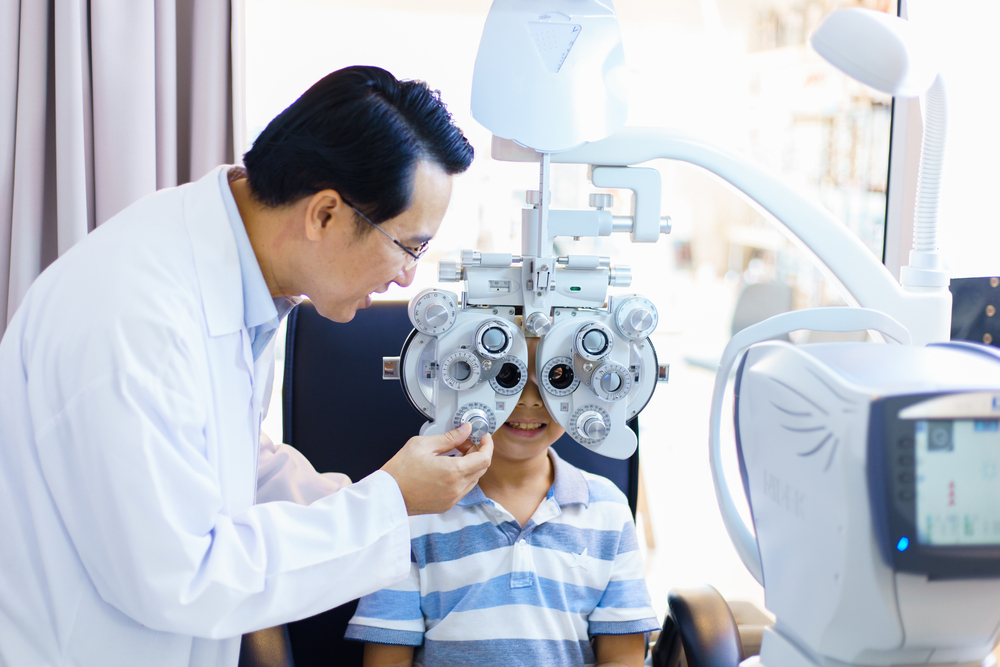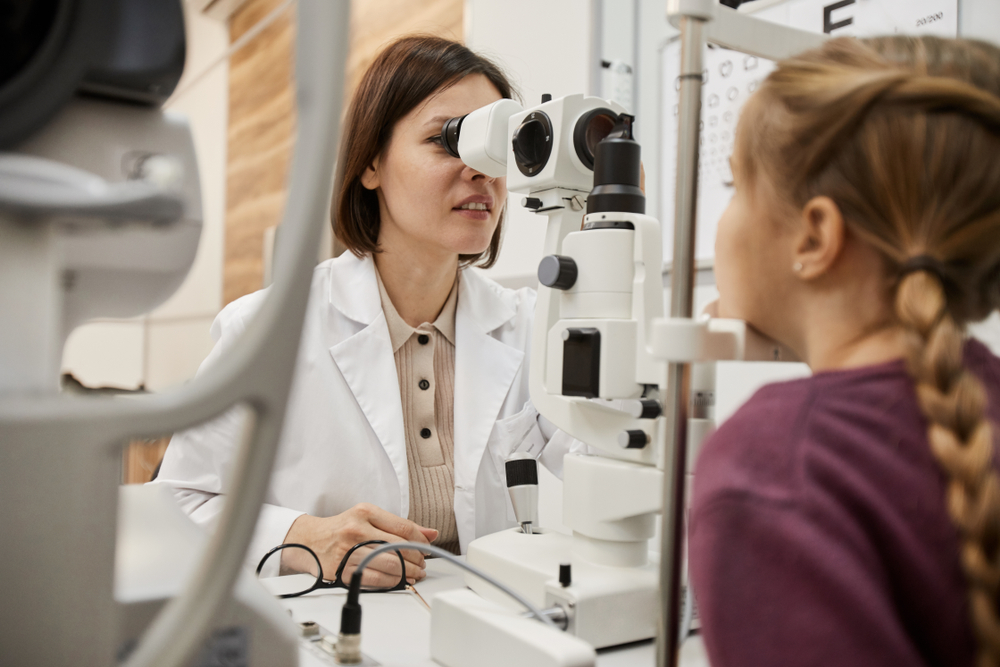Blog post by: Eye Physicians of Long Beach

Clear, healthy vision is essential for your child’s physical development and learning. Since children may not always tell you what’s bothering them, vision problems can go undetected.
That’s why pediatric eye exams are crucial. With the help of pediatric eye examinations, a pediatric ophthalmologist can recognize subtle signs of eye conditions that a child can’t describe.
They can also diagnose, treat, and manage children’s eye problems. Keep reading to learn more about pediatric ophthalmologists and what to expect at your child’s pediatric eye exam.
What is a Pediatric Ophthalmologist?

A pediatric ophthalmologist is a children’s eye care specialist who’s an expert at diagnosing, preventing, and treating all conditions and disorders that affect your child’s vision and eyes. Pediatric ophthalmologists also perform surgery as required.
Typically, pediatric ophthalmologists have the following training:
- Four years of medical school
- One year of surgical or medical internship
- Three more years of residency training in ophthalmology
- Another year of fellowship in pediatric ophthalmology
What is a Pediatric Eye Exam?
A pediatric eye examination is a series of tests to check your child’s eye and vision health. During a pediatric eye exam, a pediatric ophthalmologist can determine whether your child has any problems with their vision that require addressing.
Eye exams are also essential for assessing whether your child needs prescription glasses. Your child’s pediatric eye exam may include the following tests and measurements to check for eye or vision problems:
The Red Reflex Test
The red reflex test involves using a special instrument known as an ophthalmoscope. The handheld device has a light and magnifies the eyes, allowing your child’s pediatric ophthalmologist to examine the back of each eye.
There should be a red reflection when they shine a light into your child’s eyes. An abnormal red reflex is a yellow, white, or black reflection in one or both eyes and could be a tell-tale sign of an eye condition.
For instance, an abnormal red reflex could point to strabismus or misalignment of the eyes, an infection, a cataract, or a retinal detachment. A pediatric ophthalmologist can accurately diagnose these conditions.
The Pupil Reflex Test
In a pupil reflex test, the pediatric ophthalmologist shines a light into your child’s eyes to see how their pupils respond to light. Normal pupils automatically shrink in reaction to the light. But if they don’t, this could indicate a vision problem.
Refraction Test
A refraction test checks if your child requires glasses. If they do, the refraction will help determine what prescription they need.
The pediatric ophthalmologist will apply eye drops to widen the pupils. They will then ask your child to read letters on a chart if they are able to read.
When are Pediatric Exams Necessary?

The American Association for Pediatric Ophthalmology and Strabismus (AAPOS) and the American Academy of Ophthalmology (AAO) suggest the following schedule for eye exams in children:
Newborn
At birth, a pediatrician or other qualified health professionals should check your newborn’s eyes for infections, birth abnormalities, cataracts, glaucoma, and retinoblastoma. The tests may include:
- A red reflex test
- Pupil and blink response
Further specialized eye examinations by a pediatric ophthalmologist may be necessary if the newborn:
- Has symptoms of eye disease
- Is born prematurely
- Has a family history of childhood eye problems
6 to 12 Months
The next screening should be performed during your child’s first year of life, between 6 to 12 months. In addition to the same newborn vision screening, the doctor should also visually inspect both eyes and check for healthy eye movement and alignment.
12 to 36 months
At age 12 to 36 months, you should have your child checked for healthy eye development. Tests may include a photo screening test.
The pediatrician will use a special camera to photograph your child’s eyes. These pictures can find problems like amblyopia or lazy eye. The doctor may recommend seeing a pediatric ophthalmologist if there’s an issue.
3 to 5 Years
Your child should have their vision and eye alignment checked between three to five years of age. The pediatrician will look for focusing issues like misaligned eyes, refractive errors, amblyopia, and visual acuity testing.
If your child can read, they will test their visual acuity using an eye chart.
Your child might have to see a pediatric ophthalmologist if they have signs of:
- Refractive errors
- Lazy eye or amblyopia
- Eye misalignment or strabismus
5 Years and Older
Your child should have their visual alignment and acuity examined at age 5. Myopia or nearsightedness is the most common vision problem in children of this age.
The easiest way to address this refractive error is with eyeglasses. A pediatrician will also check your child’s eyes for other visual abnormalities. If they detect a problem, your child may need to see a pediatric ophthalmologist.
Ajay Manchandia MD, MS Long Beach Pediatric Ophthalmologist
Dr. Ajay Manchandia is a board-certified pediatric ophthalmologist at Eye Physicians of Long Beach. As a leader in his field, Dr. Manchandia specializes in the diagnosis, medical care, and treatment of eye conditions and vision disorders that are unique to children.
He also offers comprehensive pediatric eye exams, routine eye checkups, and vision screenings. Dr. Manchandia is committed to providing the personalized, world-class care each child needs.
Protect Your Child’s Vision with Pediatric Eye Exams
Dr. Manchandia offers a wide range of vision care services, including comprehensive pediatric eye exams. Through these examinations, he can ensure his youngest patients maintain healthy eyes and clear vision for years.
Has your child had a pediatric eye exam? Find out if your child could need one by requesting an appointment at Eye Physicians of Long Beach in Long Beach, CA, now!
